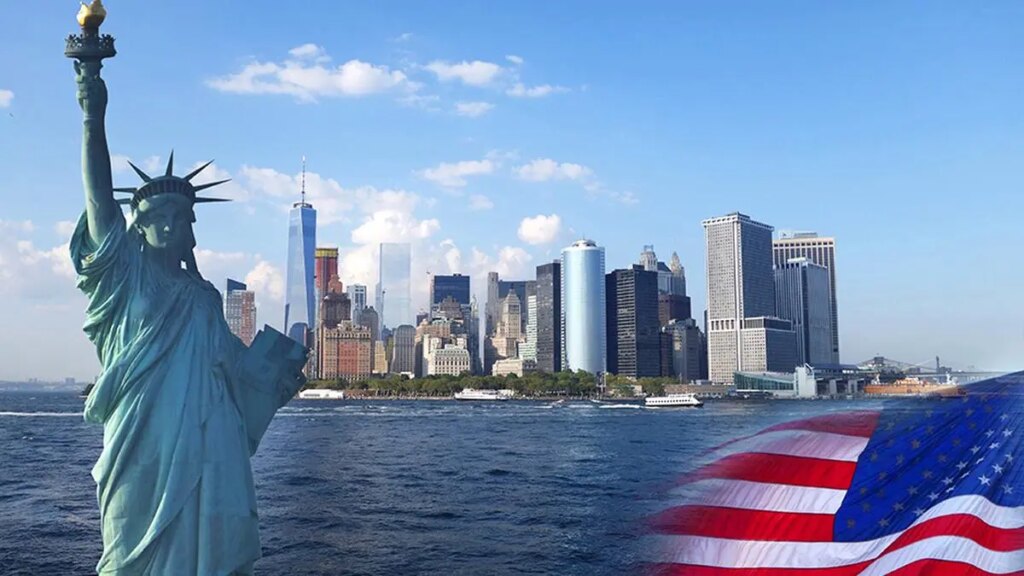
Tourists from abroad tend to stay longer and spend more, and in 2024 they represented half of the $51 billion that the city netted via tourism.
The US is on track for a very bad tourism year. According to new data from the World Travel & Tourism Council (WTTC), shared exclusively with Bloomberg, the country is set to lose $12.5 billion in travel revenue in 2025, with visitor spending estimated to fall under $169 billion by year’s end. The numbers represent a decline of around 7 per cent in visitor spending year-over-year, and a decline of 22 per cent since tourism reached its peak in the US in 2019.
This puts the US in a league of its own. Out of 184 global economies analyzed by WTTC in conjunction with Oxford Economics, it’s the only one projected to lose tourism dollars this year. “Other countries are really rolling out the welcome mat, and it feels like the US is putting up a ‘we are closed’ sign at their doorway,” says WTTC President and Chief Executive Officer Julia Simpson.
The consequences, Simpson says, could be devastating. “The US travel and tourism sector is the biggest sector globally compared to any other country, worth almost $2.6 trillion,” she says, citing WTTC and Oxford Economics data. According to Simpson’s data, direct and indirect tourism represents 9 per cent of the American economy. (Visitor spending is one of the “direct” parts of the travel economy, while “indirect” contributions include the knock-on effects of increased spending by hospitality professionals.) The sector employs 20 million people and creates $585 billion in US tax dollars each year — 7 per cent of all tax revenue the US government receives. It’s a “major mainstay of the US economy,” she says.
The issues the industry faces have been years in the making. The problems began in the Biden era as a result of Covid-era travel requirements that lingered longer than they did in most other nations. Then the soaring dollar started pricing people out. “The Japanese used to visit the US a lot, but the strong dollar made it quite an expensive place,” Simpson says. “Same with Europeans.”
But now, she says, a shift in people’s views is turning cracks in the American travel economy into chasms. According to international arrivals data from the US Department of Commerce, travelers are already shifting their behavior as a result of the current administration’s “America First” rhetoric and policy. “What we are seeing now is a sentiment shift that’s really very sad,” Simpson says. “Legislators need not confuse the tourism sector with issues around illegal immigration. A sophisticated system can balance both without turning [the country] into an island that no one wants to visit.”
In March 2025, the most recent month for which data is available, arrivals were significantly down for all of the US’s most robust visitor populations. UK arrivals were down 15 per cent year-over-year; Germans were down 28 per cent; South Korean trips declined by 15 per cent; and other key source markets, including Spain, Ireland and the Dominican Republic, were down between 24 per cent and 33 per cent.
The effects won’t be felt evenly across the US, with the $12.5 billion deficit disproportionately affecting major US gateways as well as tourism areas along the Canadian border.
Take New York City and the broader Empire State as an example. On May 8, the city’s tourism agency reversed course on its positive outlook for 2025 — the year it expected to finally rebound fully from the impact of the pandemic — to forecast that it would receive 400,000 fewer tourists and $4 billion less in tourism spending than it did in 2024.
The latest projections for New York, accounting for a total of 64 million tourists this year, include estimates that 4,00,000 more domestic tourists—but 8,00,000 fewer international visitors—will visit the five boroughs. Tourists from abroad tend to stay longer and spend more, and in 2024 they represented half of the $51 billion that the city netted via tourism.
According to Governor Kathy Hochul, this slump extends to regions upstate. Some 66 per cent of businesses in New York’s “north country,” which juts out toward Ottawa and Montreal, have already felt a “significant decrease” in Canadian bookings for 2025. In an April 29 press release, Hochul attributed that figure to President Donald Trump’s “51st state” rhetoric and the impact of tariffs. Among those north country businesses, 26 per cent have already adjusted staffing in response to the declines.
The damage is profound. WTTC now forecasts that it will take until at least 2030 for US tourism to recover to pre-Covid levels. And that’s if things don’t get worse before they get better. People in the industry, she says, have taken note of proposed legislation that would raise the cost of the Electronic System for Travel Authorization (ESTA), which is required of all travelers who plan to come to the US from countries that participate in the Visa Waiver Program. It is currently $21 per traveler but could rise to $40 if the legislation is adopted.
“The thing about tourism is it’s extremely resilient,” she says. “If you push the right buttons, it will bounce back. But increasing the cost of an ESTA will only deter people further.”
It’s a cost for which the US can’t easily compensate. Already, 90 per cent of the US tourism economy is made up of domestic travel — Americans vacationing within the 50 states — making it a hard sector to grow. Meanwhile, Simpson adds, every other country is making it easier for people to come visit with new perks like digitized visas. “India is gaining, the Middle East is gaining, China is gaining, Europe is doing quite well,” Simpson says. “It’s only Americans that are being left behind and losing out.”
More stories like this are available on bloomberg.com
Published on May 13, 2025

